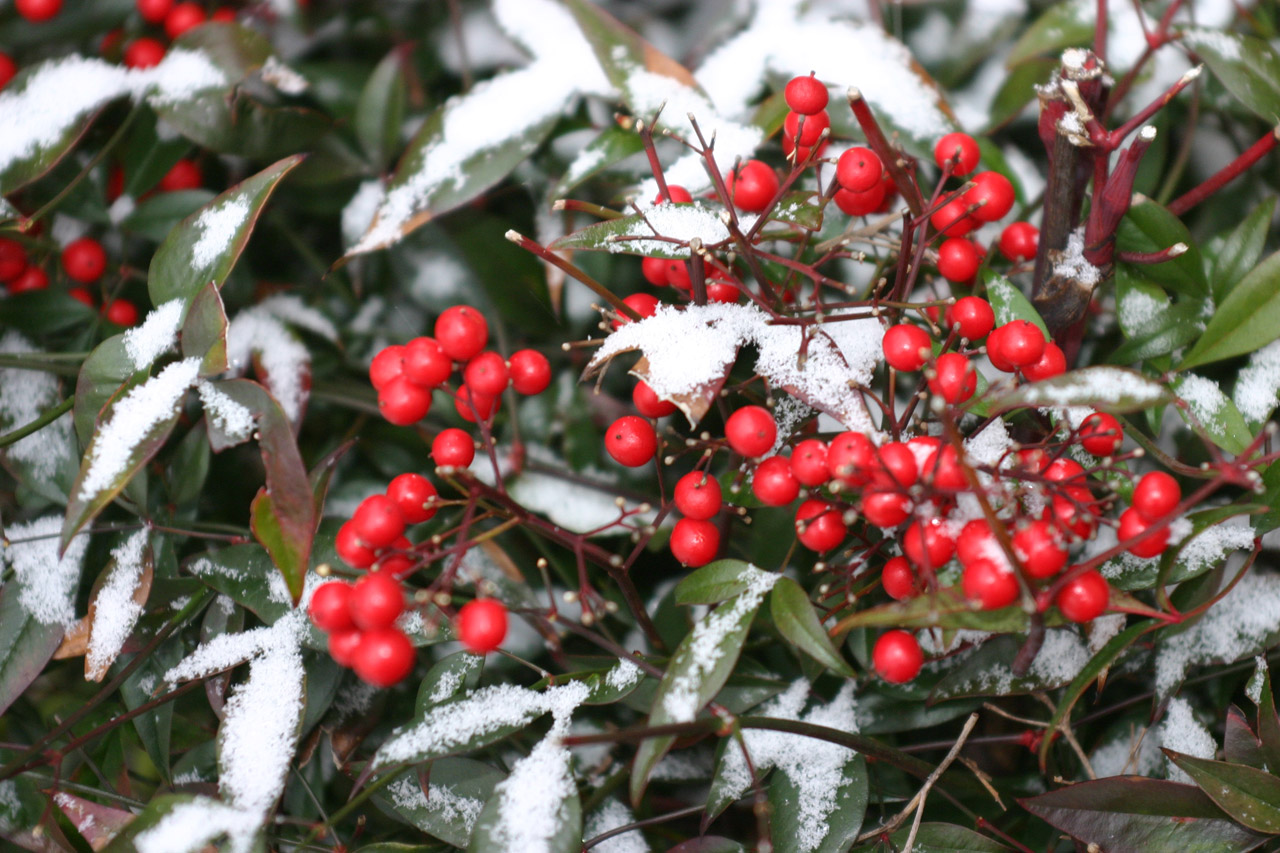There are seemingly endless overcast days. It’s dark when you wake up and dark by late afternoon. At least if there’s snow, that makes our surroundings brighter and more interesting. But then there’s shoveling, icy streets and sidewalks to navigate, etc.
Okay. I’m glad I got that out of my system. And if you’re still reading, I’m sure you’re glad too!
I’ll pivot here and offer suggestions that will help ensure the landscape surrounding your home brings you joy even during winter’s darkest days:
- Make evergreens your landscape’s foundation. Depending on the year, most of our trees and shrubs are leafless from late November to early April. That’s one reason why evergreens are a crucial element of your plant palette. As a rule of thumb, at least 40-50 percent of your property should be planted in evergreens to provide texture and year-round color year-round.
When I say evergreens should be your landscape’s foundation, I do not mean those tired, unnaturally pruned yews ‘gracing’ the front foundation beds of way too many homes. If you have yews like this, it’s time to give them the ‘heave-ho!’
There are numerous varieties of evergreens available in interesting shapes and colors (including red, yellow and blue). Some even change color during the year. Typically slow growing, these evergreens mature to a size more appropriate for garden beds nestled alongside your home and smaller planting beds.
Some evergreen varieties to consider: Fire Chief Arborvitae (Thuja Occidentalis ‘Congabe’); Golden Mop Threadleaf Cypress (Chamaecyparis pisfera ‘Golden Mop’); Compact Chinese Pfitzer Juniper (Juniperus chinensis ‘Kallay’); Green Sargent Juniper (Juniperus chinensis var. sargentii ‘Viridis’); and Dwarf Japanese Garden Juniper (Juniperus procumbens ‘Nana’).
All of the evergreen species I suggest above are non-native. That’s because there are only two evergreen species native to Illinois: the towering Eastern White Pine (Pinus Strobus) and Common Juniper (Juniperus communis), a sprawling evergreen for sandy soils.
Place large evergreens like junipers, arborvitaes, firs and spruces towards the back of your property. This will provide screening for privacy, block unsightly views and give wildlife a place to take cover. In addition, creating an evergreen windbreak on the north and/or northwest side of your property can help reduce heating costs. For maximum protection from winter winds, plant your windbreak at a distance from your home that is two to five times the mature height of the trees, according to the U.S. Department of Energy’s website, energy.gov.
- Plant shrubs and trees with interesting bark/stem color and texture. While there are certainly exceptions, most deciduous trees and shrubs look awfully mundane in the winter. Yet there are some that provide visual interest year-round. Take, for example, the Paper Bark Maple (Acer Griseum) with its cinnamon-colored peeling bark. Or the bright stems of Red-twig Dogwoods. Or the stark white bark of a birch placed in front of a dark fence.
Great choice include: Red Osier Dogwood (Cornus stolonifera); more compact Red-twig Dogwood (Cornus sericea) varieties such as ‘Allemans,’ ‘Baileyi ’ and Cornus stolonifera ‘Farrow’; Ninebark (Physocarpus opulifolius); Fox Valley River Birch ® (Betula nigra ‘Little King’); and Whitespire Birch (Betula populifolia ‘Whitespire’).
- Go for grasses, an inexpensive option to create four-season interest. I’m often asked, “Should I cut down my grasses in the fall?” Invariably, I advise clients to put away their shears until spring. Or at least until their grasses get matted down by heavy snow. Grasses add much needed texture during the winter months. They can add a dash of color with stems in red, blue and shades of brown. Grasses can also create an additional layer of winter interest when placed in front of evergreens. Think carefully about siting: For example, place a mass of feathery-plumed grasses so they are backlit by the low winter sun. Now that’s a sight to savor!
Look for attractive grasses such as: All Gold Hakone Grass (Hakonechloa macra ‘All Gold’); native Little Bluestem (Schizachyrium scoparium) and varieties ‘Carousel’ and ‘Standing Ovation’; native Switch Grass (Panicum Virgatum) with cultivars including ‘Northwind,’ ‘Totem Pole’ and ‘ Shenandoah’; and Prairie Dropseed (Sporobolus heterolepis).
- Select berry plants to add color and feed wildlife. Let me first dispel the common notion that plants with berries create a mess. That may be true if placed near a driveway or sidewalk. But berry trees and shrubs planted in adequately sized beds shouldn’t create headaches for gardeners. Too, berries from most plants will be gobbled up over the winter by hungry birds and other critters. Even berries that lack in flavor, and therefore linger longer, become an important food source for wildlife during the harshest winters. Besides demonstrating your care for nature, berry plants offer vivid pops of color—sorely needed in a dull winter landscape.
Good options to consider: Red Chokeberry (Aronia arbutifolia), Black Chokeberry (Aronia melanocarpa), American Holly (Ilex opaca) and Inkberry Holly (Ilex glabra).
- End winter on a bright note with early-bloomers. By the end of February, even the outdoor winter enthusiast yearns for spring and a burst of flowers. Fortunately, there are plants that provide a colorful ‘bridge’ from winter to spring. Nothing says ‘spring is near’ like the sight of Snowdrops (Galanthus ikariae) pushing up through melting snow, their white bell-shaped flowers opening to reveal bright yellow centers. And spring Witch-hazel (Hamamelis vernalis) puts on a show with its spidery bright yellow flowers in mid-February to early March.
Another early bloomer is Forsythia with cultivars such as ‘Lynwood Gold,’ ‘Sunrise,’ and ‘Bronxensis.’
As we edge closer to the winter solstice, spring may seem like it’s ages away. Yet by making room for plants with great winter interest, you can enjoy your garden while most of your plants slumber the wintry days away.
